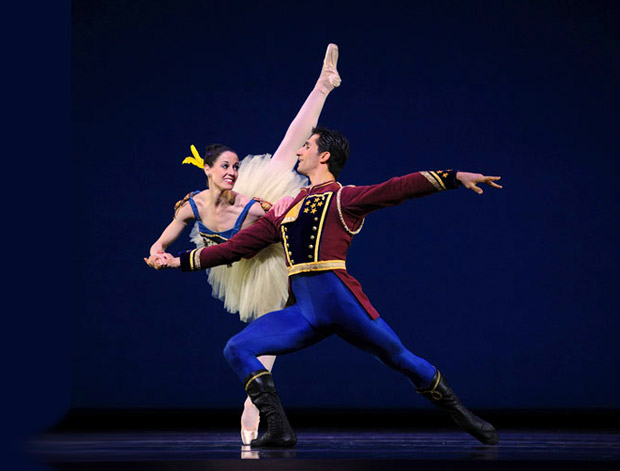
© Erik Tomasson. (Click image for larger version)
San Francisco Ballet
Gala Opening of its 80th Season: Tarantella pas de deux, L’Arlesienne solo, Flower Festival at Genzano pas de deux, In the Passerine’s Clutch, Raymonda’s Act II solo, Trio second movement, Don Quixote grand pas de deux, Onegin Act 1 pas de deux, Stars and Stripes pas de deux, After the Rain pas de deux, Suite en Blanc excerpts
San Francisco, War Memorial Opera House
24 January 2013
www.sfballet.org
Oh dear, not another gala. You may have already gathered this is not my favorite format. At a smorgasbord you don’t have to consume and digest the gustatory offerings you find less than appealing, but here you have no choice but to sit with the less flavourful tidbits staring at you. At least it’s always amusing to watch the socialites strutting their finery around the lobby before the performance and during intermission, proving without a doubt that wealth and taste are inversely proportional. With quite a few seats empty after the interval it’s also clear that their prime objective isn’t to watch the dance.

© Erik Tomasson. (Click image for larger version)
Balanchine’s energetic Tarantella is a terrific choice for the opener, for several reasons as it turns out. The perky Gottschalk music kicks you out of your post-prandial stupour so that you can enjoy Pascal Molat soar and spin playfully around the stage. If only his partner, Sasha De Sola would establish a strong rapport with him instead of flashing her broad smile at the audience all the time. Is it an attempt at misdirection so that we won’t notice her feet? It looks like her pointe shoes are either not broken in, or weren’t her usual custom-made slippers, causing a lack of clear attack and enunciation, the equivalent of speaking with a mouth full of marbles.
Pierre-François Vilanoba, through his precise execution and range of emotional expression, turns the sow’s ear of Roland Petit’s L’Arlésienne final solo into his own silk brocade portmanteau. That’s a veritable achievement given the thankless choreography that looks like an unfortunate smashing together of Giselle’s mad scene and military maneuvers with a kamikaze defenestration à la Spectre de la Rose.

© Erik Tomasson. (Click image for larger version)
Switching over to the Danish school with Bournonville’s Flower Festival at Genzano pas de deux, the Spanish Clara Blanco and Russian Gennadi Nedvigin demonstrate that impeccable schooling can trump all. Both dancers are in top form, offering sparkling Waterford-crystal footwork, light and fleet jumps; and precise pirouettes as they warmly engage each other in true partnership. Blanco is one of the few dancers I can recall who speaks so eloquently with her eyes as well as her feet.
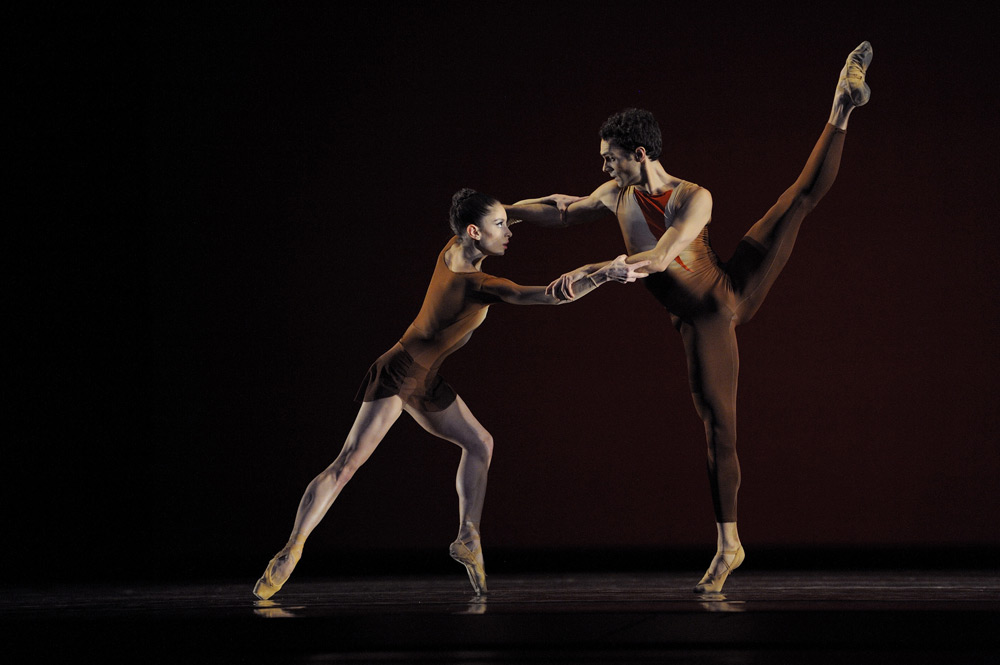
© Erik Tomasson. (Click image for larger version)
The world premiere of In the Passerine’s Clutch by Myles Thatcher is one of only three recently created works on this program. The dancers (Dores Andre, Dana Genshaft, Joan Boada and Jaime Garcia Castilla) all dance at such a high level that it compensates for the rather eclectic, arbitrary, contemporary-style choreography.
When the company revived Raymonda Act III last spring I lamented that Lorena Feijoo was out on maternity leave. Now, as the mother of a six-month-old daughter, she returns to the stage in Raymonda’s solo variation and keeps the searing Hungarian heat provocatively just beneath the surface. The following ballet is the second movement from Helgi Tomasson’s Trio, one of his better compositions, and the cast – Sarah Van Patten, Tiit Helimets and Vito Mazzeo – certainly bring it up another level with their accomplished dancing.
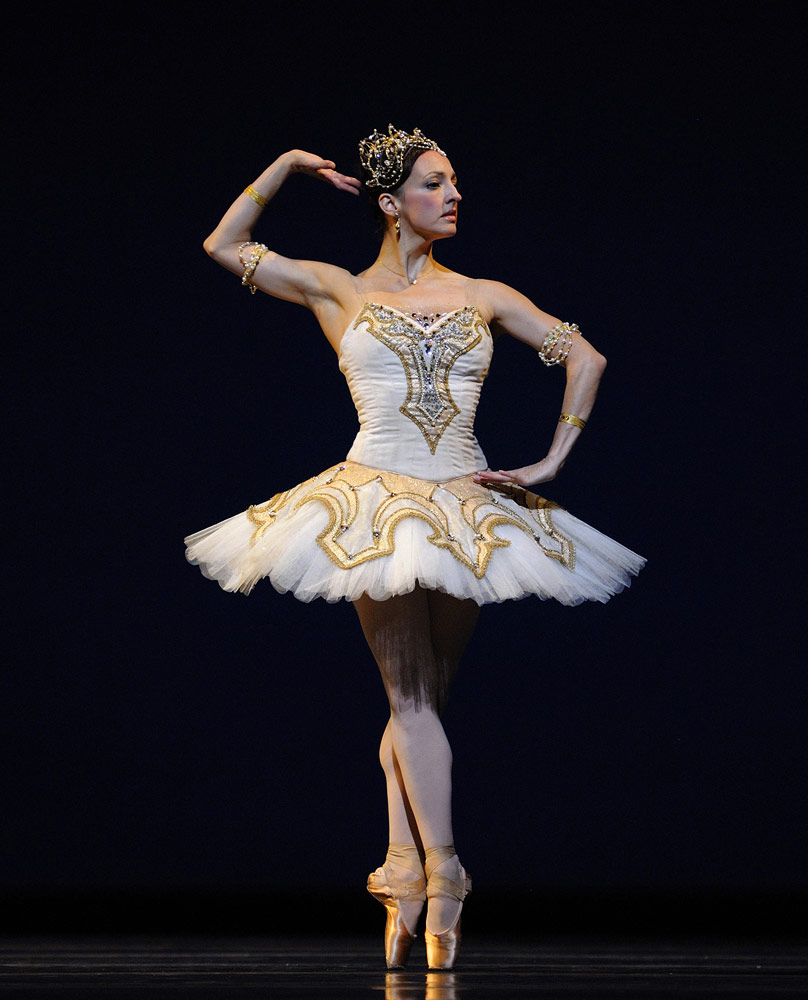
© Erik Tomasson. (Click image for larger version)
The world can’t seem to agree on greenhouse gases, nuclear weapons or war in general, so it is clear it will never ban the Don Quixote grand pas de deux from gala evenings. Taken out of the context of the complete ballet it just becomes a showcase for bravura technique. There is nothing wrong with that per se, but it would be lovely to see reverberations from the story coloring the timbre of steps. Frances Chung and Taras Domitro are both excellent in the mechanics but could add a lot more sizzling Spanish flair and warm matrimonial bliss.
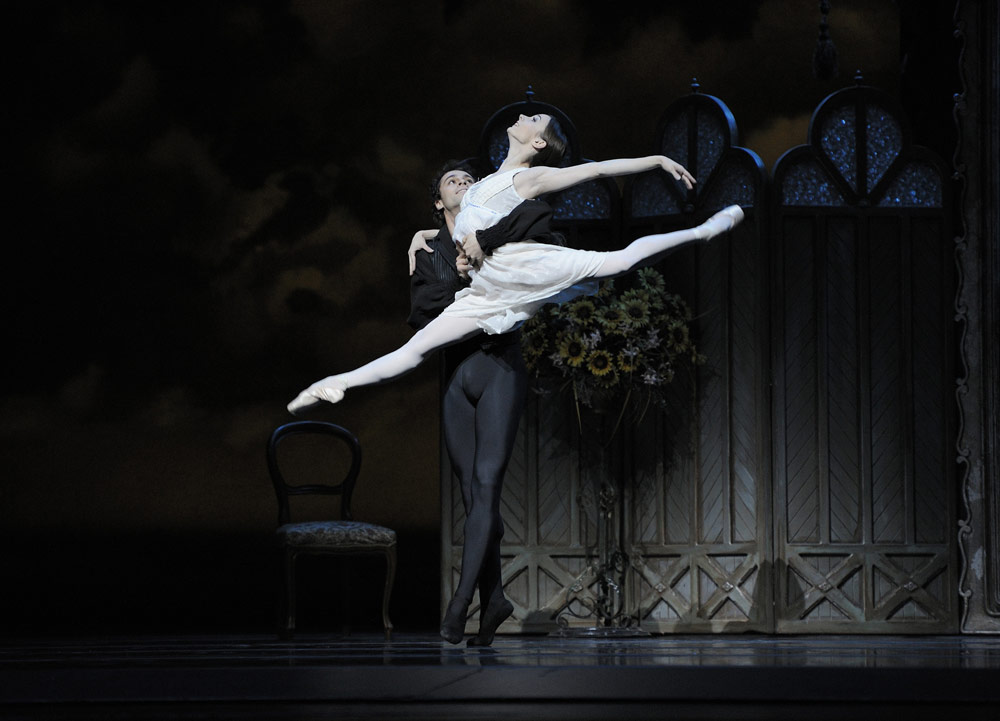
© Erik Tomasson. (Click image for larger version)
To illustrate that it is possible to retain the soul of a pas deux that has been extracted from its longer setting, Maria Kochetkova and Vitor Luiz deliver up an exquisite rendering of the duet from the first act of Cranko’s Onegin. Kochetkova’s Tatiana and Luiz’s Onegin already contain the seeds of what is to come in their last meeting years later.
But one pas de deux can easily stand on its own. Balanchine choreographed his Stars and Stripes to John Philip Sousa’s compositions, in his words, “because I like his music.” More like a Fourth of July parade than a ballet, it dispenses with plot and revels in patriotic Americana. Vanessa Zahorian and David Karapetyan in the Fourth Campaign pas de deux just need to show up and be their exuberant selves.
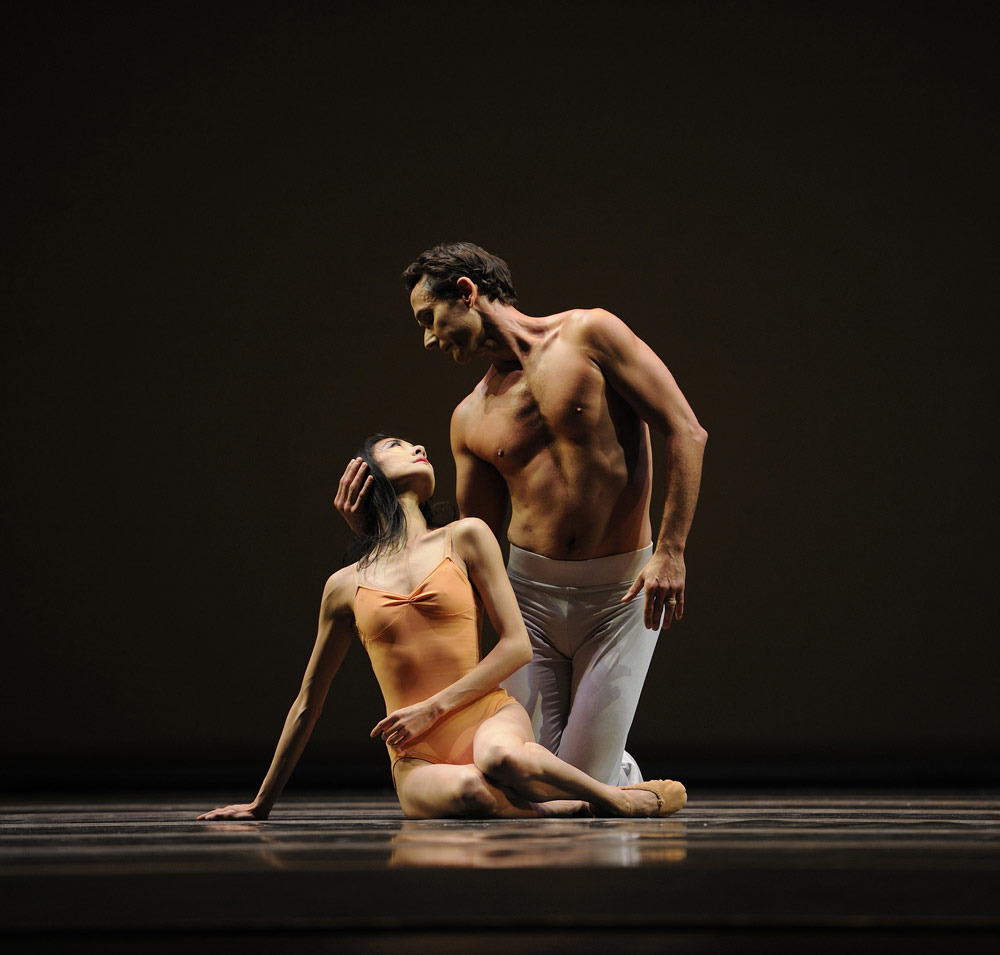
© Erik Tomasson. (Click image for larger version)
Perhaps the best pas de deux of the evening, judging by the audience reaction, is one from Christopher Wheeldon’s After the Rain. Yuan Yuan Tan and Damian Smith echo the pared-down movement design in their understated approach. Everyone seems to be enacting Picasso’s quote: “Art is the elimination of the unnecessary.” Simple is simply beautiful. (I will have more to say on this piece in my upcoming review of the Joffrey Ballet.)

© Erik Tomasson. (Click image for larger version)
After watching two solos, six duets, one trio and a quartet, excerpts from Serge Lifar’s Suite en Blanc feel like a tsunami of dancers. Four principals, eleven soloists and a corps de ballet of twenty perform what is basically a sneak peek of the entire ballet which is part of Program One opening the regular season this week. (More on this when I review the whole show.) So we do get to go out with a bang after all.

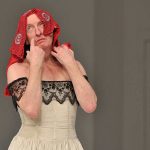
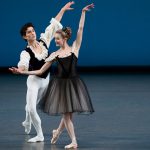
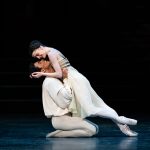
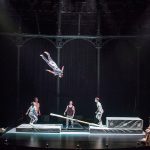

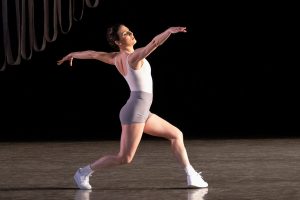
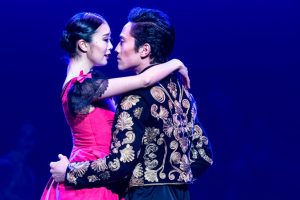
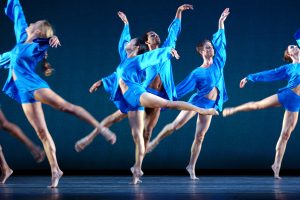

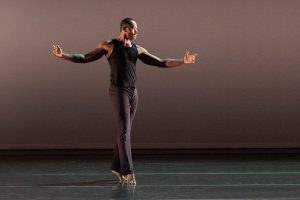
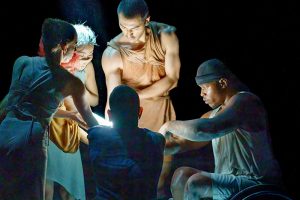

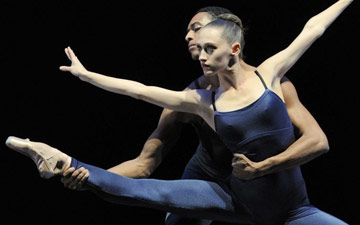
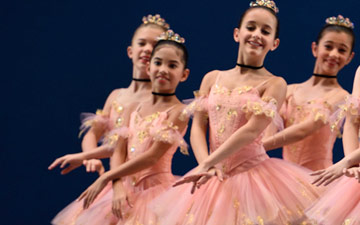

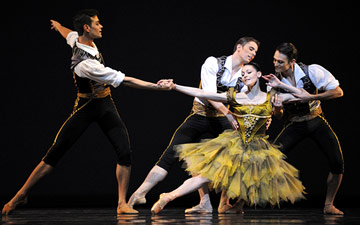
You must be logged in to post a comment.